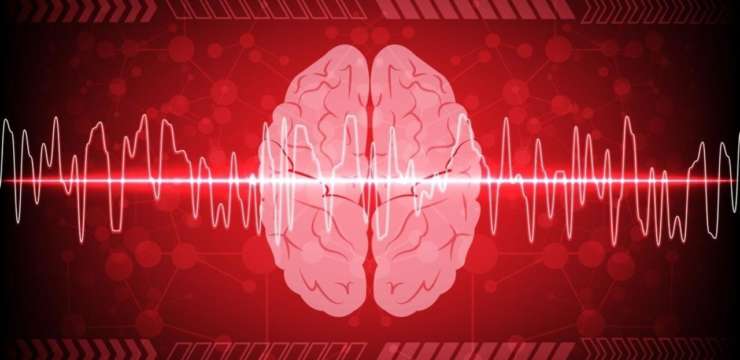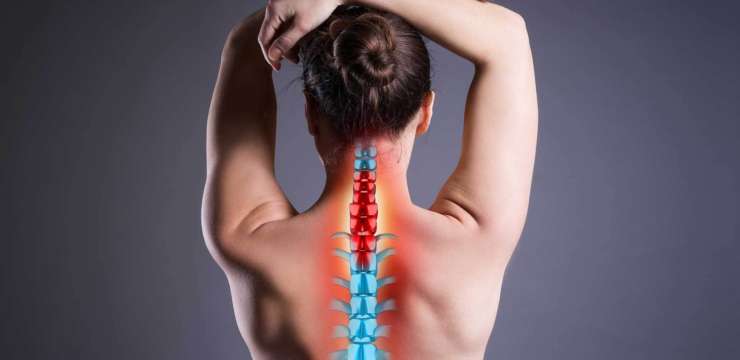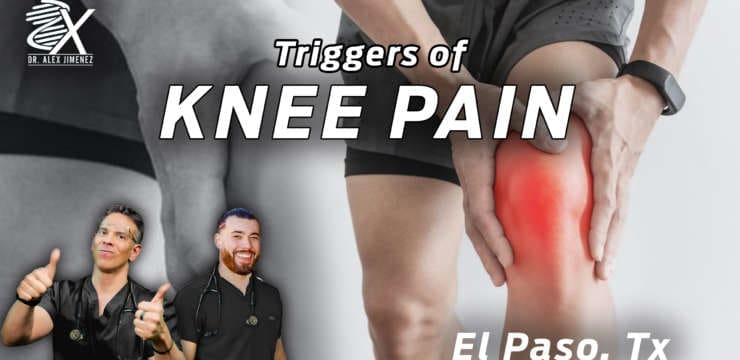
Understand the connection between good posture, back pain, and your daily habits. Find ways to make improvements.
Table of Contents
Chiropractic Care and Good Posture: A Comprehensive Guide to Reducing Low Back Pain
Introduction
Low back pain (LBP) is a global health issue that affects millions, making it one of the leading causes of disability worldwide. Whether you’re hunched over a desk, lifting heavy objects, or recovering from an injury, LBP can turn daily tasks into daunting challenges. The good news? Chiropractic care and proper posture offer promising solutions to manage and prevent this pain. In this comprehensive guide, we’ll explore the clinical rationale behind why chiropractic care works, how posture impacts the lumbar spine, and practical tips to keep your back happy. We’ll also spotlight Dr. Alexander Jimenez, a renowned chiropractor in El Paso, Texas, whose expertise in treating LBP and personal injury cases sets him apart. So, grab a comfy chair (with good lumbar support, of course), and let’s dive in!
Understanding Low Back Pain
What Is Low Back Pain?
Low back pain refers to discomfort in the lumbar region, the lower part of the spine, which consists of five vertebrae (L1 to L5). It can be acute (lasting less than six weeks), subacute (six to twelve weeks), or chronic (over three months). LBP is incredibly common, with approximately 84% of people experiencing it during their lifetime, and 23% developing chronic LBP (Hoy et al., 2012). It’s a major public health problem, especially in low- and middle-income countries, where it contributes to significant economic and social burdens (Hartvigsen et al., 2018).
Causes and Risk Factors
LBP can stem from various sources, including:
- Mechanical Issues: Muscle strains, ligament sprains, or poor posture.
- Degenerative Conditions: Degenerative disc disease, where discs lose cushioning, or osteoarthritis in facet joints.
- Structural Problems: Herniated discs, spinal stenosis (narrowing of the spinal canal), or scoliosis.
- Lifestyle Factors: Sedentary behavior, obesity, smoking, or repetitive occupational tasks.
- Psychosocial Factors: Stress, anxiety, or depression can amplify pain perception.
The lumbar spine bears most of the body’s weight and is involved in movements like bending, lifting, and twisting. When misaligned or stressed, it can lead to pain, reduced mobility, and even nerve irritation.
Impact on Daily Life
LBP can disrupt daily routines, making it hard to sit, stand, or move comfortably. It’s a leading cause of work absenteeism and reduced productivity, costing billions annually in healthcare and lost wages (Dagenais et al., 2008). Beyond physical discomfort, chronic LBP can affect mental health, sleep quality, and overall well-being, creating a vicious cycle of pain and stress.
| Impact of Low Back Pain | Description |
|---|---|
| Physical | Limits mobility, affects posture, and disrupts sleep. |
| Occupational | Causes absenteeism and reduced productivity. |
| Psychological | Increases stress, anxiety, and depression, worsening pain perception. |
| Economic | High healthcare costs and lost wages, estimated at $200 billion annually in the U.S. |
The Role of the Lumbar Spine in Low Back Pain
The lumbar spine is a marvel of engineering, designed to support the upper body, absorb shock, and allow flexibility. Its natural S-shaped curve, known as lumbar lordosis, helps distribute weight evenly. However, disruptions to this structure can lead to pain.
Anatomy of the Lumbar Spine
The lumbar spine consists of:
- Vertebrae (L1-L5): Large bones that provide structural support.
- Intervertebral Discs: Cushion-like structures that absorb shock and allow movement.
- Facet Joints: Connect vertebrae, enabling bending and twisting.
- Muscles and Ligaments: Stabilize the spine and support movement.
When these components are stressed—through injury, poor posture, or degeneration—pain can result. For example, a herniated disc can press on nerves, causing radiating pain, while muscle imbalances can strain ligaments.
How Lumbar Issues Affect Daily Routines
Lumbar spine problems can make everyday tasks challenging:
- Sitting: Prolonged sitting, especially with poor posture, increases disc pressure, which can worsen pain.
- Standing/Walking: Misalignment can cause uneven weight distribution, leading to fatigue and discomfort.
- Lifting: Improper lifting techniques can strain lumbar muscles or discs, triggering acute pain.
- Sleeping: Poor spinal alignment during sleep can exacerbate symptoms, disrupting rest.
Research indicates that lumbar spine issues, such as reduced lordosis or disc degeneration, are common in chronic LBP patients (Karppinen et al., 2011). Addressing these issues through targeted interventions is crucial for relief.
Posture and Low Back Pain
How Posture Affects the Lumbar Spine
Posture refers to how you hold your body during activities like standing, sitting, or moving. Good posture aligns the spine’s natural curves, reducing strain on muscles, ligaments, and discs. Poor posture, on the other hand, can disrupt this balance, leading to:
- Muscle Imbalances: Tight hip flexors or weak core muscles can cause the spine to become misaligned.
- Increased Disc Pressure: Slouching or forward head posture can increase stress on the lumbar discs, potentially leading to degeneration or herniation.
- Spinal Misalignment: Deviations like excessive lordosis (swayback) or kyphosis (hunchback) can strain the lumbar spine.
A study in EFORT Open Reviews found that prolonged poor posture is a potential risk factor for lumbar spine injuries, emphasizing the need for comprehensive postural assessment (Du et al., 2023).
Common Postural Issues
Several postural problems are linked to LBP:
- Forward Head Posture: Common in desk workers, this shifts the head forward, increasing strain on the neck and lower back.
- Anterior Pelvic Tilt: The pelvis tilts forward, flattening the lumbar curve and straining muscles.
- Swayback (Hyperlordosis): An exaggerated lumbar curve increases pressure on discs and joints.
- Flat Back: Loss of the natural lumbar curve can reduce shock absorption, leading to pain.
These issues can be identified through postural assessments, which are critical for tailoring treatment plans.
Methods of Postural Assessment
Healthcare professionals use various methods to assess posture, particularly in athletes and those with LBP:
- Visual Observation: Noting deviations like forward head or pelvic tilt.
- Plumb Line Assessment: Using a weighted string to check spinal alignment.
- Photogrammetry: Analyzing photographs to measure postural angles, considered highly reliable (Singla et al., 2014).
- Radiography: X-rays or MRI to assess structural issues like scoliosis or disc degeneration.
- Force Platforms: Measuring body sway to evaluate balance and posture.
These methods help identify deviations that contribute to LBP, guiding interventions like chiropractic adjustments or exercises.
| Postural Assessment Method | Description | Relevance to LBP |
|---|---|---|
| Visual Observation | Observing body alignment in standing/sitting | Identifies obvious deviations like slouching |
| Plumb Line | Checks alignment using a vertical reference | Detects spinal misalignments |
| Photogrammetry | Measures angles from photographs | Reliable for quantifying postural issues |
| Radiography | Uses X-rays/MRI for structural assessment | Diagnoses disc or joint issues |
| Force Platforms | Measures body sway and balance | Assesses stability affecting LBP |
Chiropractic Care for Low Back Pain
What Is Chiropractic Care?
Chiropractic care is a non-invasive, hands-on approach focusing on the musculoskeletal system, particularly the spine. Chiropractors diagnose and treat mechanical disorders using techniques like spinal manipulation, mobilization, and soft tissue therapy. The goal is to restore alignment, reduce pain, and improve function.
How Chiropractic Care Helps with Low Back Pain
Chiropractic care addresses the root causes of LBP, such as:
- Spinal Misalignment: Adjustments correct subluxations, reducing nerve irritation.
- Muscle Tension: Soft tissue therapies relieve tightness and improve blood flow.
- Joint Dysfunction: Manipulation restores mobility to restricted joints.
A systematic review in The British Journal of Sports Medicine found that spinal manipulation is effective for acute and subacute non-specific LBP, with moderate pain reduction (Gianola et al., 2022). For chronic LBP, chiropractic care combined with exercise shows significant improvements in pain and function (George et al., 2021).
Chiropractic Techniques for Low Back Pain
- Spinal Manipulation: A controlled thrust to improve joint mobility.
- Mobilization: Gentle movements to restore range of motion.
- Soft Tissue Therapy: Massage or myofascial release to address muscle tension.
- Exercise Prescription: Core-strengthening or stretching exercises to support the spine.
These techniques are tailored to the patient’s condition, ensuring safe and effective treatment.
Clinical Insights from Dr. Alexander Jimenez
Expertise in Chiropractic Care
Dr. Alexander Jimenez, DC, APRN, FNP-BC, is a chiropractor with over 30 years of experience in El Paso, Texas. His practice integrates chiropractic care, functional medicine, and rehabilitation, focusing on conditions like LBP. Dr. Jimenez’s approach includes:
- Advanced Diagnostics: Using MRI, X-rays, and dual-scope procedures to identify the precise cause of pain.
- Personalized Treatment Plans: Combining adjustments, exercises, and lifestyle advice.
- Postural Correction: Addressing alignment issues to prevent pain recurrence.
His LinkedIn profile highlights his work on complex LBP recovery plans and musculoskeletal rehabilitation, showcasing his commitment to evidence-based care (Jimenez, n.d.).
Role in Personal Injury Cases
Dr. Jimenez is a distinguished practitioner for personal injury victims in El Paso. He serves as a liaison between legal documentation and medical services, ensuring accurate assessment and treatment of injuries. His use of advanced imaging and diagnostic evaluations allows him to link injuries to symptoms, providing targeted care. This is particularly valuable in cases involving car accidents or workplace injuries, where precise documentation is critical.
| Dr. Jimenez’s Contributions | Details |
|---|---|
| Experience | Over 30 years in chiropractic care |
| Diagnostics | Uses MRI, X-rays, and dual-scope procedures |
| Personal Injury Role | Links injuries to medical needs for legal cases |
| Treatment Approach | Combines adjustments, exercises, and posture correction |
Can Core Exercises Help With Back Pain- Video
Therapeutic Techniques for Low Back Pain
Exercise Therapy
Exercise is a cornerstone of LBP management, with strong evidence supporting its effectiveness for chronic cases. Types of exercises include:
- Core Strengthening: Targets muscles like the transversus abdominis to support the spine.
- Flexibility Exercises: Stretching to Enhance Range of Motion and Reduce Stiffness.
- Aerobic Exercise: Activities like walking or swimming to enhance blood flow and healing.
A Cochrane review found that exercise therapy is more effective than usual care for chronic LBP, improving pain and function (Hayden et al., 2021).
Physical Therapy
Physical therapists design individualized programs that may include:
- Manual Therapy: Joint mobilization or massage to reduce pain.
- Therapeutic Exercises: Strengthening and stretching to address imbalances.
- Education: Teaching proper body mechanics and posture.
Other Non-Surgical Options
- Medications: NSAIDs or muscle relaxants may be used for temporary relief.
- Injections: Epidural steroid injections for severe pain.
- Acupuncture: May reduce pain by stimulating endorphins, though evidence is mixed.
A review in The Korean Journal of Internal Medicine recommends non-pharmacological treatments like exercise and manual therapy as first-line options for chronic LBP (Park et al., 2023).
When Surgery Is Considered
Surgery is reserved for cases with severe neurological deficits or when conservative treatments fail. Options include discectomy for herniated discs or fusion for degenerative disc disease. However, outcomes vary, and non-surgical approaches are preferred initially (Karppinen et al., 2011).
The Role of Posture in Daily Life
Tips for Maintaining Good Posture
Good posture reduces strain on the lumbar spine, potentially preventing LBP. Practical tips include:
- Standing: Keep weight on the balls of your feet, knees slightly bent, and shoulders relaxed.
- Sitting: Use a chair with lumbar support, keep feet flat, and avoid crossing legs.
- Lifting: Bend at the knees, keep the back straight, and lift with your legs.
- Sleeping: Sleep on your side with a pillow between your knees or on your back with a pillow under your knees.
Incorporating Posture into Daily Routines
- Workplace Ergonomics: Adjust your chair and monitor to maintain neutral spine alignment.
- Regular Breaks: Stand and stretch every 30 minutes to avoid prolonged sitting.
- Exercise: Incorporate yoga or Pilates to strengthen core muscles and improve posture.
A study in Behavioral Sciences found that practicing correct posture in daily activities reduces musculoskeletal strain and improves overall health (Montuori et al., 2023).
Conclusion
Low back pain is a complex condition, but chiropractic care and good posture offer effective strategies for relief and prevention. Dr. Alexander Jimenez’s expertise in El Paso highlights the value of personalized, evidence-based care, particularly for personal injury cases. By combining chiropractic adjustments, exercise therapy, and postural corrections, you can take control of your back health. Always consult a healthcare professional for a personalized treatment plan tailored to your specific needs.
Disclaimer: This article is for informational purposes only and should not be used as a substitute for professional medical advice, diagnosis, or treatment. Always consult your physician or other qualified healthcare provider with any questions you may have regarding a medical condition. Never disregard professional medical advice or delay in seeking it because of something you have read here.
References
- Dagenais, S., Caro, J., & Haldeman, S. (2008). A systematic review of low back pain cost of illness studies in the United States and internationally. The Spine Journal, 8(1), 8–20. doi.org/10.1016/j.spinee.2007.10.005
- Du, S.-H., et al. (2023). Spinal Posture Assessment and Low Back Pain. EFORT Open Reviews, 8(9), 708–718. pubmed.ncbi.nlm.nih.gov/37655847/
- George, S. Z., et al. (2021). Interventions for the management of acute and chronic low back pain: Revision 2021. Journal of Orthopaedic & Sports Physical Therapy, 51(11), CPG1–CPG60. www.jospt.org/doi/10.2519/jospt.2021.0304
- Gianola, S., et al. (2022). Effectiveness of treatments for acute and subacute mechanical non-specific low back pain: A systematic review with network meta-analysis. British Journal of Sports Medicine, 56(1), 41–50. pubmed.ncbi.nlm.nih.gov/33849907/
- Hartvigsen, J., et al. (2018). What low back pain is and why we need to pay attention. The Lancet, 391(10137), 2356–2367. doi.org/10.1016/S0140-6736(18)30480-X
- Hayden, J. A., et al. (2021). Exercise Therapy for Chronic Low Back Pain. Cochrane Database of Systematic Reviews, (9). pubmed.ncbi.nlm.nih.gov/34580864/
- Hoy, D., et al. (2012). A systematic review of the global prevalence of low back pain. Arthritis & Rheumatism, 64(6), 2028–2037. pubmed.ncbi.nlm.nih.gov/22231424/
- Jiménez, A. (n.d.). LinkedIn profile. www.linkedin.com/in/dralexjimenez/
- Karppinen, J., et al. (2011). Management of degenerative disk disease and chronic low back pain. Orthopedic Clinics of North America, 42(4), 513–528. pubmed.ncbi.nlm.nih.gov/21944588/
- Montuori, P., et al. (2023). Assessment on practicing correct body posture and determinant analyses in a large population of a metropolitan area. Behavioral Sciences, 13(2), 144. pubmed.ncbi.nlm.nih.gov/36829374/
- Park, S. C., et al. (2023). Assessment and nonsurgical management of low back pain: A narrative review. The Korean Journal of Internal Medicine, 38(1), 16–26. pubmed.ncbi.nlm.nih.gov/36420562/
- Singla, D., et al. (2014). Methods of postural assessment used for sports persons. Journal of Clinical and Diagnostic Research, 8(4), LE01–LE04. pubmed.ncbi.nlm.nih.gov/24959470/
Disclaimers
Professional Scope of Practice *
The information herein on "Good Posture and Back Pain: How to Prevent It" is not intended to replace a one-on-one relationship with a qualified health care professional or licensed physician and is not medical advice. We encourage you to make healthcare decisions based on your research and partnership with a qualified healthcare professional.
Blog Information & Scope Discussions
Welcome to El Paso's wellness blog, where Dr. Alex Jimenez, DC, FNP-C, a board-certified Family Practice Nurse Practitioner (FNP-C) and Chiropractor (DC), presents insights on how our team is dedicated to holistic healing and personalized care. Our practice aligns with evidence-based treatment protocols inspired by integrative medicine principles, similar to those found on dralexjimenez.com, focusing on restoring health naturally for patients of all ages.
Our areas of chiropractic practice include Wellness & Nutrition, Chronic Pain, Personal Injury, Auto Accident Care, Work Injuries, Back Injury, Low Back Pain, Neck Pain, Migraine Headaches, Sports Injuries, Severe Sciatica, Scoliosis, Complex Herniated Discs, Fibromyalgia, Chronic Pain, Complex Injuries, Stress Management, Functional Medicine Treatments, and in-scope care protocols.
Our information scope is limited to chiropractic, musculoskeletal, physical medicine, wellness, contributing etiological viscerosomatic disturbances within clinical presentations, associated somato-visceral reflex clinical dynamics, subluxation complexes, sensitive health issues, and functional medicine articles, topics, and discussions.
We provide and present clinical collaboration with specialists from various disciplines. Each specialist is governed by their professional scope of practice and their jurisdiction of licensure. We use functional health & wellness protocols to treat and support care for the injuries or disorders of the musculoskeletal system.
Our videos, posts, topics, subjects, and insights cover clinical matters, issues, and topics that relate to and directly or indirectly support our clinical scope of practice.*
Our office has reasonably attempted to provide supportive citations and has identified the relevant research studies or studies supporting our posts. We provide copies of supporting research studies available to regulatory boards and the public upon request.
We understand that we cover matters that require an additional explanation of how they may assist in a particular care plan or treatment protocol; therefore, to discuss the subject matter above further, please feel free to ask Dr. Alex Jimenez, DC, APRN, FNP-BC, or contact us at 915-850-0900.
We are here to help you and your family.
Blessings
Dr. Alex Jimenez DC, MSACP, APRN, FNP-BC*, CCST, IFMCP, CFMP, ATN
email: coach@elpasofunctionalmedicine.com
Licensed as a Doctor of Chiropractic (DC) in Texas & New Mexico*
Texas DC License # TX5807
New Mexico DC License # NM-DC2182
Licensed as a Registered Nurse (RN*) in Texas & Multistate
Texas RN License # 1191402
ANCC FNP-BC: Board Certified Nurse Practitioner*
Compact Status: Multi-State License: Authorized to Practice in 40 States*
Graduate with Honors: ICHS: MSN-FNP (Family Nurse Practitioner Program)
Degree Granted. Master's in Family Practice MSN Diploma (Cum Laude)
Dr. Alex Jimenez, DC, APRN, FNP-BC*, CFMP, IFMCP, ATN, CCST
My Digital Business Card







